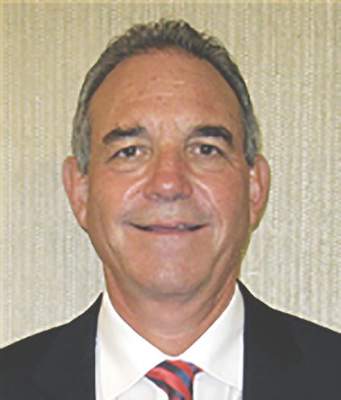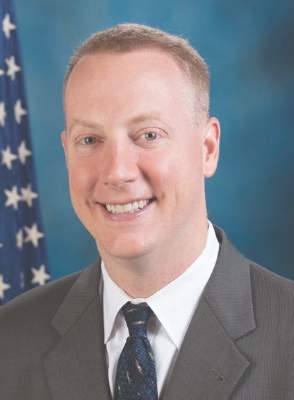User login
ABIM to test open-book MOC assessments
The American Board of Internal Medicine has launched a study to determine the feasibility of allowing access to online resources for a portion of the maintenance of certification assessments.
“We are seeking physicians who have passed the Internal Medicine Certification exam or have taken the Internal Medicine MOC exam within the last 5 years to participate,” Dr. Richard J. Baron, ABIM president and CEO, said in a March 22 blog post on the organization’s website.
Offering an open-book portion of the MOC assessment was one of the recommendations on improving the MOC process made in a final report from the Assessment 2020 Task Force earlier this year.
Dr. Baron noted that physicians have been saying that allowing access to online resources “would be truer to a physician’s everyday experiences.”
He also noted that in April, the ABIM board of directors and council “will be meeting jointly to consider physician-guided recommendations about the best options for updating the MOC assessment process,” during which a timetable to pilot, test, and implement changes will be refined.
The American Board of Internal Medicine has launched a study to determine the feasibility of allowing access to online resources for a portion of the maintenance of certification assessments.
“We are seeking physicians who have passed the Internal Medicine Certification exam or have taken the Internal Medicine MOC exam within the last 5 years to participate,” Dr. Richard J. Baron, ABIM president and CEO, said in a March 22 blog post on the organization’s website.
Offering an open-book portion of the MOC assessment was one of the recommendations on improving the MOC process made in a final report from the Assessment 2020 Task Force earlier this year.
Dr. Baron noted that physicians have been saying that allowing access to online resources “would be truer to a physician’s everyday experiences.”
He also noted that in April, the ABIM board of directors and council “will be meeting jointly to consider physician-guided recommendations about the best options for updating the MOC assessment process,” during which a timetable to pilot, test, and implement changes will be refined.
The American Board of Internal Medicine has launched a study to determine the feasibility of allowing access to online resources for a portion of the maintenance of certification assessments.
“We are seeking physicians who have passed the Internal Medicine Certification exam or have taken the Internal Medicine MOC exam within the last 5 years to participate,” Dr. Richard J. Baron, ABIM president and CEO, said in a March 22 blog post on the organization’s website.
Offering an open-book portion of the MOC assessment was one of the recommendations on improving the MOC process made in a final report from the Assessment 2020 Task Force earlier this year.
Dr. Baron noted that physicians have been saying that allowing access to online resources “would be truer to a physician’s everyday experiences.”
He also noted that in April, the ABIM board of directors and council “will be meeting jointly to consider physician-guided recommendations about the best options for updating the MOC assessment process,” during which a timetable to pilot, test, and implement changes will be refined.
Pushback on Part B drug payment proposal already beginning
Rheumatologists already are voicing concerns regarding a new proposal to test adjustments to how drugs administered in a physician’s office are paid for.
That proposal, published March 11 in the Federal Register, would test a change to the current reimbursement of average sales price plus 6% for Part B drugs with a lower add-on percentage of 2.5% plus $16.50.
In a fact sheet highlighting the proposals, the Centers for Medicare & Medicaid Services said the change to a lower percentage plus a flat fee “will cover the cost of any drug paid under Medicare Part B.”
However, there are already questions about that.
“While this may seem the way in which CMS will control costs, they fail to recognize the cost to facilities in obtaining approval for these treatments, receiving and storing, and ultimately safely administering these therapies in an environment that provides the best outcomes for patients,” Dr. Norman B. Gaylis, a rheumatologist in private practice in Aventura, Fla., said.
In fact, Dr. Gaylis adds that the focus on lowering drug expenses in the Part B space could have the unintended consequence of raising these expenses because it will force a change of venue.
“It has become so prohibitive that ultimately many patients will be referred to more expensive, less efficient outpatient facilities with, in fact, an increase in overall costs,” he said.
More than 300 provider and patient groups covering a range of specialties and including the American College of Rheumatology, the Coalition of State Rheumatology Organizations, and a number of state rheumatology organizations, are calling on Congress to ask CMS to withdraw the proposal.
In a March 17 letter to the majority and minority leaders in both chambers, the group is challenging the CMS assertion in the proposed rule that the current 6% add-on “may encourage the use of more expensive drugs because the 6% add-on generates more revenues for more expensive drugs.”
“This assumption fails to take into account the fact that providers’ prescribing decisions depend on a variety of factors, including clinical characteristics and the complex needs of the Medicare population,” the letter states. “Most importantly, there is no evidence indicating that the payment changes contemplated by the model will improve quality of care, and may adversely impact those patients that lose access to their most appropriate treatments.”
CMS offered two other pricing models that would be tested: indications-based pricing and reference pricing. The former would set payment rates based on the clinical effectiveness of a drug, while the latter would test the impact of setting a benchmark price for a group of drugs in a similar therapeutic class. Related to that is a proposal that CMS enter into voluntary risk-sharing agreements with drug manufacturers to link outcomes with price adjustments.
Dr. Gaylis suggested that CMS is going after the wrong party if cost containment is the ultimate goal here and should be focusing its efforts on the prices of the drugs themselves rather than how much they spend on physician reimbursement.
“Ironically, the major expense, i.e., the cost of drugs themselves, continues to spiral in the absence of any legitimate mechanism between CMS and pharma to contract prices that could save health care billions of dollars,” he said. “Ultimately, in my opinion, the solution rests in creating a fair and equal price for facilities administering these therapies and creating a pass-through where the drugs are not part of the physician’s risk, cost, or benefit and all payers, including CMS, can negotiate drug costs directly with the manufacturer.”
As part of the proposed rule, CMS also is considering creating feedback and decision-support tools to help, such as offering best practices for prescribing certain medications or providing feedback on prescribing patterns relative to local, regional, and national trends.
On the patient side, CMS is proposing to eliminate any patient cost sharing for office-administered drugs.
Comments on the proposals are due May 9.
Rheumatologists already are voicing concerns regarding a new proposal to test adjustments to how drugs administered in a physician’s office are paid for.
That proposal, published March 11 in the Federal Register, would test a change to the current reimbursement of average sales price plus 6% for Part B drugs with a lower add-on percentage of 2.5% plus $16.50.
In a fact sheet highlighting the proposals, the Centers for Medicare & Medicaid Services said the change to a lower percentage plus a flat fee “will cover the cost of any drug paid under Medicare Part B.”
However, there are already questions about that.
“While this may seem the way in which CMS will control costs, they fail to recognize the cost to facilities in obtaining approval for these treatments, receiving and storing, and ultimately safely administering these therapies in an environment that provides the best outcomes for patients,” Dr. Norman B. Gaylis, a rheumatologist in private practice in Aventura, Fla., said.
In fact, Dr. Gaylis adds that the focus on lowering drug expenses in the Part B space could have the unintended consequence of raising these expenses because it will force a change of venue.
“It has become so prohibitive that ultimately many patients will be referred to more expensive, less efficient outpatient facilities with, in fact, an increase in overall costs,” he said.
More than 300 provider and patient groups covering a range of specialties and including the American College of Rheumatology, the Coalition of State Rheumatology Organizations, and a number of state rheumatology organizations, are calling on Congress to ask CMS to withdraw the proposal.
In a March 17 letter to the majority and minority leaders in both chambers, the group is challenging the CMS assertion in the proposed rule that the current 6% add-on “may encourage the use of more expensive drugs because the 6% add-on generates more revenues for more expensive drugs.”
“This assumption fails to take into account the fact that providers’ prescribing decisions depend on a variety of factors, including clinical characteristics and the complex needs of the Medicare population,” the letter states. “Most importantly, there is no evidence indicating that the payment changes contemplated by the model will improve quality of care, and may adversely impact those patients that lose access to their most appropriate treatments.”
CMS offered two other pricing models that would be tested: indications-based pricing and reference pricing. The former would set payment rates based on the clinical effectiveness of a drug, while the latter would test the impact of setting a benchmark price for a group of drugs in a similar therapeutic class. Related to that is a proposal that CMS enter into voluntary risk-sharing agreements with drug manufacturers to link outcomes with price adjustments.
Dr. Gaylis suggested that CMS is going after the wrong party if cost containment is the ultimate goal here and should be focusing its efforts on the prices of the drugs themselves rather than how much they spend on physician reimbursement.
“Ironically, the major expense, i.e., the cost of drugs themselves, continues to spiral in the absence of any legitimate mechanism between CMS and pharma to contract prices that could save health care billions of dollars,” he said. “Ultimately, in my opinion, the solution rests in creating a fair and equal price for facilities administering these therapies and creating a pass-through where the drugs are not part of the physician’s risk, cost, or benefit and all payers, including CMS, can negotiate drug costs directly with the manufacturer.”
As part of the proposed rule, CMS also is considering creating feedback and decision-support tools to help, such as offering best practices for prescribing certain medications or providing feedback on prescribing patterns relative to local, regional, and national trends.
On the patient side, CMS is proposing to eliminate any patient cost sharing for office-administered drugs.
Comments on the proposals are due May 9.
Rheumatologists already are voicing concerns regarding a new proposal to test adjustments to how drugs administered in a physician’s office are paid for.
That proposal, published March 11 in the Federal Register, would test a change to the current reimbursement of average sales price plus 6% for Part B drugs with a lower add-on percentage of 2.5% plus $16.50.
In a fact sheet highlighting the proposals, the Centers for Medicare & Medicaid Services said the change to a lower percentage plus a flat fee “will cover the cost of any drug paid under Medicare Part B.”
However, there are already questions about that.
“While this may seem the way in which CMS will control costs, they fail to recognize the cost to facilities in obtaining approval for these treatments, receiving and storing, and ultimately safely administering these therapies in an environment that provides the best outcomes for patients,” Dr. Norman B. Gaylis, a rheumatologist in private practice in Aventura, Fla., said.
In fact, Dr. Gaylis adds that the focus on lowering drug expenses in the Part B space could have the unintended consequence of raising these expenses because it will force a change of venue.
“It has become so prohibitive that ultimately many patients will be referred to more expensive, less efficient outpatient facilities with, in fact, an increase in overall costs,” he said.
More than 300 provider and patient groups covering a range of specialties and including the American College of Rheumatology, the Coalition of State Rheumatology Organizations, and a number of state rheumatology organizations, are calling on Congress to ask CMS to withdraw the proposal.
In a March 17 letter to the majority and minority leaders in both chambers, the group is challenging the CMS assertion in the proposed rule that the current 6% add-on “may encourage the use of more expensive drugs because the 6% add-on generates more revenues for more expensive drugs.”
“This assumption fails to take into account the fact that providers’ prescribing decisions depend on a variety of factors, including clinical characteristics and the complex needs of the Medicare population,” the letter states. “Most importantly, there is no evidence indicating that the payment changes contemplated by the model will improve quality of care, and may adversely impact those patients that lose access to their most appropriate treatments.”
CMS offered two other pricing models that would be tested: indications-based pricing and reference pricing. The former would set payment rates based on the clinical effectiveness of a drug, while the latter would test the impact of setting a benchmark price for a group of drugs in a similar therapeutic class. Related to that is a proposal that CMS enter into voluntary risk-sharing agreements with drug manufacturers to link outcomes with price adjustments.
Dr. Gaylis suggested that CMS is going after the wrong party if cost containment is the ultimate goal here and should be focusing its efforts on the prices of the drugs themselves rather than how much they spend on physician reimbursement.
“Ironically, the major expense, i.e., the cost of drugs themselves, continues to spiral in the absence of any legitimate mechanism between CMS and pharma to contract prices that could save health care billions of dollars,” he said. “Ultimately, in my opinion, the solution rests in creating a fair and equal price for facilities administering these therapies and creating a pass-through where the drugs are not part of the physician’s risk, cost, or benefit and all payers, including CMS, can negotiate drug costs directly with the manufacturer.”
As part of the proposed rule, CMS also is considering creating feedback and decision-support tools to help, such as offering best practices for prescribing certain medications or providing feedback on prescribing patterns relative to local, regional, and national trends.
On the patient side, CMS is proposing to eliminate any patient cost sharing for office-administered drugs.
Comments on the proposals are due May 9.
CMS announces application schedule for Next Gen ACOs
Organizations looking to become a next generation accountable care organization (ACO) must have their letter of intent to apply submitted to the Centers for Medicare & Medicaid Services by May 2.
This deadline represents the second and final round of applications the agency is accepting to become next generation ACOs. New ACOs under this model will begin in the second year of the next generation program in January 2017, joining 21 other organizations already designated as next generation ACOs.
CMS is hosting a number of open door forums to provide guidance to applicants:
• March 22: Letter of intent overview
• March 29: Application overview
• April 5: Financial methodology
• April 12: Participating provider list
• April 19: Benefit enhancements
Additional information on the next generation ACO model, along with application instructions, can be found here.
Organizations looking to become a next generation accountable care organization (ACO) must have their letter of intent to apply submitted to the Centers for Medicare & Medicaid Services by May 2.
This deadline represents the second and final round of applications the agency is accepting to become next generation ACOs. New ACOs under this model will begin in the second year of the next generation program in January 2017, joining 21 other organizations already designated as next generation ACOs.
CMS is hosting a number of open door forums to provide guidance to applicants:
• March 22: Letter of intent overview
• March 29: Application overview
• April 5: Financial methodology
• April 12: Participating provider list
• April 19: Benefit enhancements
Additional information on the next generation ACO model, along with application instructions, can be found here.
Organizations looking to become a next generation accountable care organization (ACO) must have their letter of intent to apply submitted to the Centers for Medicare & Medicaid Services by May 2.
This deadline represents the second and final round of applications the agency is accepting to become next generation ACOs. New ACOs under this model will begin in the second year of the next generation program in January 2017, joining 21 other organizations already designated as next generation ACOs.
CMS is hosting a number of open door forums to provide guidance to applicants:
• March 22: Letter of intent overview
• March 29: Application overview
• April 5: Financial methodology
• April 12: Participating provider list
• April 19: Benefit enhancements
Additional information on the next generation ACO model, along with application instructions, can be found here.
Perfect storm brewing for price war in gastroenterology
WASHINGTON – Between a growing trend of consumers becoming more cost conscious in health care and a lack of differentiating quality measures, gastroenterologists could be staring at price as the key competitive point that determines market share.
This was the warning Francois de Brantes, executive director of the consultancy Health Care Incentives Improvement Institute, told attendees at the American Gastroenterological Association’s Partners in Quality 2016 conference.
On the side of quality, he noted that what is passing for quality measures, both in the current Physician Quality Reporting System and in the recently released consensus core quality measures developed in collaboration between the Centers for Medicare & Medicaid Services (CMS), America’s Health Insurance Plans, providers, and other stakeholders, will do very little to differentiate one physician from another.
And signs are pointing to that continuing as CMS shifts to paying for quality under the forthcoming Merit-Based Incentive Payment System and alternative payment models.
“Over the next several years, there are going to be coming from medical specialty societies and others, proposals to CMS around physician-based alternative payment models,” Mr. de Brantes said.
“I’ll bet you anything that most of them are going to be procedure centric because they think Medicare price doesn’t matter, it’s fixed,” he continued. “But what you do there will have a spill-over effect. They’re going to have a tendency to be very tightly defined around a few services, a few things that most physicians feel are under their control. The more you do that, the more you are going into a price war.”
He called on gastroenterologists to be more proactive in creating quality measures that are truly based on outcomes and can measure the skill of practicing physicians.
“The less variation there is that is a function of the quality of care being given and the more the variation that’s left is really about differences in prices, the more you are headed straight into a price war,” Mr. de Brantes said. “The more variability there is because of skills in managing patients and how the management of that condition evolves over time, the more opportunity there is to really grab a much bigger of slice of the pie.”
And with pricing becoming a more important piece of the health care decision-making process, gastroenterologists will need to be doing more to show value for what patients are paying for and they will have to be a lot more transparent in providing pricing information up front.
“The point is when it is your money you do make different decisions and transparency becomes the condition for doing business,” Mr. de Brantes said. “It’s not an option and I am not saying it’s going to happen tomorrow, but we are seeing enough signs of enough providers and enough specialties taking a proactive role because the pressure is mounting.”
That pressure is coming from the growing number of high-deductable health care plans that are putting more individual dollars in play, forcing patients to be more aware of their own medical expenses and making decisions based on them.
“This isn’t fantasy. It is people’s money,” he said “It’s not the third party payer’s coffers that are being pulled into this. It is the individual family’s income, 20% of which is now being used if you have a couple of chronic conditions, 20% of your income is being used for health care expenses. So there is a different demand. There’s a different expectation.”
And with that focus coming from consumers on price, he said that added an even stronger incentive for gastroenterologists to step up and develop meaningful quality measures that will add a level of distinction within the market.
“You better be figuring out measures that truly differentiate performance in a meaningful way to you and a meaningful way to consumers,” he said “If everyone looks the same in quality, then I know how I make my decision.”
WASHINGTON – Between a growing trend of consumers becoming more cost conscious in health care and a lack of differentiating quality measures, gastroenterologists could be staring at price as the key competitive point that determines market share.
This was the warning Francois de Brantes, executive director of the consultancy Health Care Incentives Improvement Institute, told attendees at the American Gastroenterological Association’s Partners in Quality 2016 conference.
On the side of quality, he noted that what is passing for quality measures, both in the current Physician Quality Reporting System and in the recently released consensus core quality measures developed in collaboration between the Centers for Medicare & Medicaid Services (CMS), America’s Health Insurance Plans, providers, and other stakeholders, will do very little to differentiate one physician from another.
And signs are pointing to that continuing as CMS shifts to paying for quality under the forthcoming Merit-Based Incentive Payment System and alternative payment models.
“Over the next several years, there are going to be coming from medical specialty societies and others, proposals to CMS around physician-based alternative payment models,” Mr. de Brantes said.
“I’ll bet you anything that most of them are going to be procedure centric because they think Medicare price doesn’t matter, it’s fixed,” he continued. “But what you do there will have a spill-over effect. They’re going to have a tendency to be very tightly defined around a few services, a few things that most physicians feel are under their control. The more you do that, the more you are going into a price war.”
He called on gastroenterologists to be more proactive in creating quality measures that are truly based on outcomes and can measure the skill of practicing physicians.
“The less variation there is that is a function of the quality of care being given and the more the variation that’s left is really about differences in prices, the more you are headed straight into a price war,” Mr. de Brantes said. “The more variability there is because of skills in managing patients and how the management of that condition evolves over time, the more opportunity there is to really grab a much bigger of slice of the pie.”
And with pricing becoming a more important piece of the health care decision-making process, gastroenterologists will need to be doing more to show value for what patients are paying for and they will have to be a lot more transparent in providing pricing information up front.
“The point is when it is your money you do make different decisions and transparency becomes the condition for doing business,” Mr. de Brantes said. “It’s not an option and I am not saying it’s going to happen tomorrow, but we are seeing enough signs of enough providers and enough specialties taking a proactive role because the pressure is mounting.”
That pressure is coming from the growing number of high-deductable health care plans that are putting more individual dollars in play, forcing patients to be more aware of their own medical expenses and making decisions based on them.
“This isn’t fantasy. It is people’s money,” he said “It’s not the third party payer’s coffers that are being pulled into this. It is the individual family’s income, 20% of which is now being used if you have a couple of chronic conditions, 20% of your income is being used for health care expenses. So there is a different demand. There’s a different expectation.”
And with that focus coming from consumers on price, he said that added an even stronger incentive for gastroenterologists to step up and develop meaningful quality measures that will add a level of distinction within the market.
“You better be figuring out measures that truly differentiate performance in a meaningful way to you and a meaningful way to consumers,” he said “If everyone looks the same in quality, then I know how I make my decision.”
WASHINGTON – Between a growing trend of consumers becoming more cost conscious in health care and a lack of differentiating quality measures, gastroenterologists could be staring at price as the key competitive point that determines market share.
This was the warning Francois de Brantes, executive director of the consultancy Health Care Incentives Improvement Institute, told attendees at the American Gastroenterological Association’s Partners in Quality 2016 conference.
On the side of quality, he noted that what is passing for quality measures, both in the current Physician Quality Reporting System and in the recently released consensus core quality measures developed in collaboration between the Centers for Medicare & Medicaid Services (CMS), America’s Health Insurance Plans, providers, and other stakeholders, will do very little to differentiate one physician from another.
And signs are pointing to that continuing as CMS shifts to paying for quality under the forthcoming Merit-Based Incentive Payment System and alternative payment models.
“Over the next several years, there are going to be coming from medical specialty societies and others, proposals to CMS around physician-based alternative payment models,” Mr. de Brantes said.
“I’ll bet you anything that most of them are going to be procedure centric because they think Medicare price doesn’t matter, it’s fixed,” he continued. “But what you do there will have a spill-over effect. They’re going to have a tendency to be very tightly defined around a few services, a few things that most physicians feel are under their control. The more you do that, the more you are going into a price war.”
He called on gastroenterologists to be more proactive in creating quality measures that are truly based on outcomes and can measure the skill of practicing physicians.
“The less variation there is that is a function of the quality of care being given and the more the variation that’s left is really about differences in prices, the more you are headed straight into a price war,” Mr. de Brantes said. “The more variability there is because of skills in managing patients and how the management of that condition evolves over time, the more opportunity there is to really grab a much bigger of slice of the pie.”
And with pricing becoming a more important piece of the health care decision-making process, gastroenterologists will need to be doing more to show value for what patients are paying for and they will have to be a lot more transparent in providing pricing information up front.
“The point is when it is your money you do make different decisions and transparency becomes the condition for doing business,” Mr. de Brantes said. “It’s not an option and I am not saying it’s going to happen tomorrow, but we are seeing enough signs of enough providers and enough specialties taking a proactive role because the pressure is mounting.”
That pressure is coming from the growing number of high-deductable health care plans that are putting more individual dollars in play, forcing patients to be more aware of their own medical expenses and making decisions based on them.
“This isn’t fantasy. It is people’s money,” he said “It’s not the third party payer’s coffers that are being pulled into this. It is the individual family’s income, 20% of which is now being used if you have a couple of chronic conditions, 20% of your income is being used for health care expenses. So there is a different demand. There’s a different expectation.”
And with that focus coming from consumers on price, he said that added an even stronger incentive for gastroenterologists to step up and develop meaningful quality measures that will add a level of distinction within the market.
“You better be figuring out measures that truly differentiate performance in a meaningful way to you and a meaningful way to consumers,” he said “If everyone looks the same in quality, then I know how I make my decision.”
AT THE AGA PARTNERS IN QUALITY MEETING
25% of hospital readmissions may be preventable
About one-quarter of hospital readmissions are potentially avoidable, new research indicates.
Further, gaps in care during the initial inpatient stay appear to account for half of those preventable readmissions, Dr. Andrew Auerbach, professor of medicine at the University of California, San Francisco, and his colleagues said in a research report published online March 7 in JAMA Internal Medicine.
In a second study, researchers found that a seven-factor HOSPITAL score identified patients at high risk for a potentially avoidable readmission.
The findings bring new evidence to the issues of whether, and how many readmissions are preventable.
Dr. Auerbach reported the results of an observational study of 1,000 general medicine patients readmitted within 30 days of discharge to 12 academic medical centers that make up the Hospital Medicine Reengineering Network (HOMERuN) during April 1, 2012, and March 31, 2013.
The researchers found that 26.9% (269 of 1,000) of readmissions “were considered potentially preventable, with half of these readmissions thought to represent gaps in care during the initial inpatient stay,” the researchers wrote.
Preventable readmissions were based on case reviews by at least two physicians who were extensively trained in the review process and had access to completed patient interviews, physician surveys, data derived from abstracted medical records, and the complete medical record. Each site had a pool of 3-10 physician adjudicators coordinated by a physician lead, who oversaw the process and resolved difficult cases.
Four factors were found to be “strongly associated” with potentially preventable readmissions: premature discharge during initial stay, failure to send information to the outpatient care team, lack of discussion about care goals with patients with serious illness, and emergency department decisions to admit patients who may not have required a return inpatient stay.
The researchers noted that readmissions related to gaps in care may not necessarily be a problem with emergency medicine per se, but something more broadly problematic (JAMA Intern Med. doi:10.1001/jamainternmed.2015.7863).
“Overcoming gaps in care in the attempt to avoid potentially unnecessary admissions from the emergency department may need to involve improved communications among primary care health professionals, hospital-based physicians, and emergency medicine physicians about criteria for admission and resources available in the community, in addition to providing greater access to urgent care for patients who would otherwise seek care in an emergency department and improving patients’ understanding of how and when to seek emergency care,” the authors wrote.
In a second study published the same day in JAMA Internal Medicine (2016 Mar 7. doi: 10.1001/jamainternmed.2015.8462), Dr. Jacques Donzé of the Bern University Hospital in Switzerland, and his colleagues in the United States, Canada, Israel, and Switzerland, found the HOSPITAL score “had good discriminative ability and excellent calibration for predicting the risk of 30-day potentially avoidable readmission.”
HOSPITAL scores seven factors to predict readmission risk, which include the following:
• Hemoglobin level at discharge.
• Discharge from an Oncology unit.
• Sodium level at discharge.
• Procedure conducted during stay.
• Index admission Type: urgent or emergent (nonelective).
• Number of hospital Admissions in the previous year.
• Length of stay.
The research looked at 121,136 adults discharged from nine large hospitals across four countries in 2011. Within 30 days after discharge, 15% (17,516) of patients were readmitted and 9.7% (11,307) had a potentially avoidable readmission. The HOSPITAL score had a C statistic of 0.72 for predicting potentially avoidable readmissions and identified the 14% of patients whose scores indicated that they were at high risk for a potentially avoidable readmission.
“The HOSPITAL score is the first risk prediction score to focus on potentially avoidable readmissions as opposed to all-cause readmissions, using readily available predictors at the time of discharge,” the authors wrote. “This score has the potential to reliably identify patients in need of more intensive transitional care interventions to prevent hospital readmissions.”
Over the last decade, reducing readmissions has been viewed as a goal in its own right, and our concerted efforts have yielded modest progress toward that goal.
At the same time, the value of readmissions as a measure of hospital quality has been debated because of the low rates of preventable readmissions, the mixed success of interventions, the problems with measurement, the possible adverse effects on safety net hospitals, and the questionable relationships between readmission rates and other quality measures.
The HOMERuN study results are a reminder that the real value in paying attention to readmissions is that it forces us to explore the interstitial spaces of our health care system – those areas where supporting structures need to be strengthened.
Real improvement will not come from adding one new check box to the discharge form. Improvement requires creative approaches to getting the complex array of professionals and caregivers involved in the care of very sick patients to work as a team across boundaries created by professional roles, geography, and time.
Dr. David Atkins of the Department of Veterans Affairs in Washington and Dr. Devan Kansagara of Oregon Science & Health University in Portland, offered their perspective in an editorial published online March 7 in JAMA Internal Medicine (2016 Mar 7. doi: 10.1001/jamainternmed.2015.8603).
Over the last decade, reducing readmissions has been viewed as a goal in its own right, and our concerted efforts have yielded modest progress toward that goal.
At the same time, the value of readmissions as a measure of hospital quality has been debated because of the low rates of preventable readmissions, the mixed success of interventions, the problems with measurement, the possible adverse effects on safety net hospitals, and the questionable relationships between readmission rates and other quality measures.
The HOMERuN study results are a reminder that the real value in paying attention to readmissions is that it forces us to explore the interstitial spaces of our health care system – those areas where supporting structures need to be strengthened.
Real improvement will not come from adding one new check box to the discharge form. Improvement requires creative approaches to getting the complex array of professionals and caregivers involved in the care of very sick patients to work as a team across boundaries created by professional roles, geography, and time.
Dr. David Atkins of the Department of Veterans Affairs in Washington and Dr. Devan Kansagara of Oregon Science & Health University in Portland, offered their perspective in an editorial published online March 7 in JAMA Internal Medicine (2016 Mar 7. doi: 10.1001/jamainternmed.2015.8603).
Over the last decade, reducing readmissions has been viewed as a goal in its own right, and our concerted efforts have yielded modest progress toward that goal.
At the same time, the value of readmissions as a measure of hospital quality has been debated because of the low rates of preventable readmissions, the mixed success of interventions, the problems with measurement, the possible adverse effects on safety net hospitals, and the questionable relationships between readmission rates and other quality measures.
The HOMERuN study results are a reminder that the real value in paying attention to readmissions is that it forces us to explore the interstitial spaces of our health care system – those areas where supporting structures need to be strengthened.
Real improvement will not come from adding one new check box to the discharge form. Improvement requires creative approaches to getting the complex array of professionals and caregivers involved in the care of very sick patients to work as a team across boundaries created by professional roles, geography, and time.
Dr. David Atkins of the Department of Veterans Affairs in Washington and Dr. Devan Kansagara of Oregon Science & Health University in Portland, offered their perspective in an editorial published online March 7 in JAMA Internal Medicine (2016 Mar 7. doi: 10.1001/jamainternmed.2015.8603).
About one-quarter of hospital readmissions are potentially avoidable, new research indicates.
Further, gaps in care during the initial inpatient stay appear to account for half of those preventable readmissions, Dr. Andrew Auerbach, professor of medicine at the University of California, San Francisco, and his colleagues said in a research report published online March 7 in JAMA Internal Medicine.
In a second study, researchers found that a seven-factor HOSPITAL score identified patients at high risk for a potentially avoidable readmission.
The findings bring new evidence to the issues of whether, and how many readmissions are preventable.
Dr. Auerbach reported the results of an observational study of 1,000 general medicine patients readmitted within 30 days of discharge to 12 academic medical centers that make up the Hospital Medicine Reengineering Network (HOMERuN) during April 1, 2012, and March 31, 2013.
The researchers found that 26.9% (269 of 1,000) of readmissions “were considered potentially preventable, with half of these readmissions thought to represent gaps in care during the initial inpatient stay,” the researchers wrote.
Preventable readmissions were based on case reviews by at least two physicians who were extensively trained in the review process and had access to completed patient interviews, physician surveys, data derived from abstracted medical records, and the complete medical record. Each site had a pool of 3-10 physician adjudicators coordinated by a physician lead, who oversaw the process and resolved difficult cases.
Four factors were found to be “strongly associated” with potentially preventable readmissions: premature discharge during initial stay, failure to send information to the outpatient care team, lack of discussion about care goals with patients with serious illness, and emergency department decisions to admit patients who may not have required a return inpatient stay.
The researchers noted that readmissions related to gaps in care may not necessarily be a problem with emergency medicine per se, but something more broadly problematic (JAMA Intern Med. doi:10.1001/jamainternmed.2015.7863).
“Overcoming gaps in care in the attempt to avoid potentially unnecessary admissions from the emergency department may need to involve improved communications among primary care health professionals, hospital-based physicians, and emergency medicine physicians about criteria for admission and resources available in the community, in addition to providing greater access to urgent care for patients who would otherwise seek care in an emergency department and improving patients’ understanding of how and when to seek emergency care,” the authors wrote.
In a second study published the same day in JAMA Internal Medicine (2016 Mar 7. doi: 10.1001/jamainternmed.2015.8462), Dr. Jacques Donzé of the Bern University Hospital in Switzerland, and his colleagues in the United States, Canada, Israel, and Switzerland, found the HOSPITAL score “had good discriminative ability and excellent calibration for predicting the risk of 30-day potentially avoidable readmission.”
HOSPITAL scores seven factors to predict readmission risk, which include the following:
• Hemoglobin level at discharge.
• Discharge from an Oncology unit.
• Sodium level at discharge.
• Procedure conducted during stay.
• Index admission Type: urgent or emergent (nonelective).
• Number of hospital Admissions in the previous year.
• Length of stay.
The research looked at 121,136 adults discharged from nine large hospitals across four countries in 2011. Within 30 days after discharge, 15% (17,516) of patients were readmitted and 9.7% (11,307) had a potentially avoidable readmission. The HOSPITAL score had a C statistic of 0.72 for predicting potentially avoidable readmissions and identified the 14% of patients whose scores indicated that they were at high risk for a potentially avoidable readmission.
“The HOSPITAL score is the first risk prediction score to focus on potentially avoidable readmissions as opposed to all-cause readmissions, using readily available predictors at the time of discharge,” the authors wrote. “This score has the potential to reliably identify patients in need of more intensive transitional care interventions to prevent hospital readmissions.”
About one-quarter of hospital readmissions are potentially avoidable, new research indicates.
Further, gaps in care during the initial inpatient stay appear to account for half of those preventable readmissions, Dr. Andrew Auerbach, professor of medicine at the University of California, San Francisco, and his colleagues said in a research report published online March 7 in JAMA Internal Medicine.
In a second study, researchers found that a seven-factor HOSPITAL score identified patients at high risk for a potentially avoidable readmission.
The findings bring new evidence to the issues of whether, and how many readmissions are preventable.
Dr. Auerbach reported the results of an observational study of 1,000 general medicine patients readmitted within 30 days of discharge to 12 academic medical centers that make up the Hospital Medicine Reengineering Network (HOMERuN) during April 1, 2012, and March 31, 2013.
The researchers found that 26.9% (269 of 1,000) of readmissions “were considered potentially preventable, with half of these readmissions thought to represent gaps in care during the initial inpatient stay,” the researchers wrote.
Preventable readmissions were based on case reviews by at least two physicians who were extensively trained in the review process and had access to completed patient interviews, physician surveys, data derived from abstracted medical records, and the complete medical record. Each site had a pool of 3-10 physician adjudicators coordinated by a physician lead, who oversaw the process and resolved difficult cases.
Four factors were found to be “strongly associated” with potentially preventable readmissions: premature discharge during initial stay, failure to send information to the outpatient care team, lack of discussion about care goals with patients with serious illness, and emergency department decisions to admit patients who may not have required a return inpatient stay.
The researchers noted that readmissions related to gaps in care may not necessarily be a problem with emergency medicine per se, but something more broadly problematic (JAMA Intern Med. doi:10.1001/jamainternmed.2015.7863).
“Overcoming gaps in care in the attempt to avoid potentially unnecessary admissions from the emergency department may need to involve improved communications among primary care health professionals, hospital-based physicians, and emergency medicine physicians about criteria for admission and resources available in the community, in addition to providing greater access to urgent care for patients who would otherwise seek care in an emergency department and improving patients’ understanding of how and when to seek emergency care,” the authors wrote.
In a second study published the same day in JAMA Internal Medicine (2016 Mar 7. doi: 10.1001/jamainternmed.2015.8462), Dr. Jacques Donzé of the Bern University Hospital in Switzerland, and his colleagues in the United States, Canada, Israel, and Switzerland, found the HOSPITAL score “had good discriminative ability and excellent calibration for predicting the risk of 30-day potentially avoidable readmission.”
HOSPITAL scores seven factors to predict readmission risk, which include the following:
• Hemoglobin level at discharge.
• Discharge from an Oncology unit.
• Sodium level at discharge.
• Procedure conducted during stay.
• Index admission Type: urgent or emergent (nonelective).
• Number of hospital Admissions in the previous year.
• Length of stay.
The research looked at 121,136 adults discharged from nine large hospitals across four countries in 2011. Within 30 days after discharge, 15% (17,516) of patients were readmitted and 9.7% (11,307) had a potentially avoidable readmission. The HOSPITAL score had a C statistic of 0.72 for predicting potentially avoidable readmissions and identified the 14% of patients whose scores indicated that they were at high risk for a potentially avoidable readmission.
“The HOSPITAL score is the first risk prediction score to focus on potentially avoidable readmissions as opposed to all-cause readmissions, using readily available predictors at the time of discharge,” the authors wrote. “This score has the potential to reliably identify patients in need of more intensive transitional care interventions to prevent hospital readmissions.”
FROM JAMA INTERNAL MEDICINE
Better Billing Privacy Protections Needed for Youth
Better protections of confidential health information of adolescents and young adults in billing and insurance statements are needed, according to a position paper endorsed by the American Academy of Pediatrics, Society for Adolescent Health and Medicine, and the American College of Obstetricians and Gynecologists.
The three societies are calling for policies and procedures to be established “to ensure that health care billing and insurance claims processes such as explanation of benefit (EOB) notifications do not impede the confidential provision of health care services to adolescents” (J Adolesc Health. 2016 Mar. doi: 10.1016/j.jadohealth.2015.12.009).
To reach that objective, the position paper is calling for the Department of Health & Human Services to issue guidance to clarify “endanger” and “endangerment” in the special confidentiality provisions of HIPAA to make it clear that they include “harms that result when access to important sensitive services, such as contraception and STI services, is impeded by fear of loss of confidentiality.”
AAP, ACOG, and SAHM also endorse the idea that sending EOBs and similar notices “should not be required when individuals insured as dependents obtain sensitive services.”
Dr. Lee Savio Beers, medical director for municipal and regional affairs, Child Health Advocacy Institute at Children’s National Medical Center in Washington, said the policy paper is “a nice summary of what has been best practices for a while and what we really should establish more clearly as best practice.”
She recalled experiences in practice where adolescents told her they did not come for treatment because of concerns that “information would show up on the billing statement to their parents, and they would know that they were seeking care for these issues and then surmise that they were sexually active.”
Dr. Beers added that the position paper could go further in establishing requirements for both parents and caregivers on the importance of confidentiality.
“I think that it is sometimes hard for parents to think about there might be something that my child is going to go to the doctor for that I am not going to know about,” she said in an interview.
“When we see patients for visits, when they get close to their teenage years, we start interviewing them, giving them an opportunity to talk without their parent in the room,” she continued. “Some families are surprised by it. Some are glad that you are asking them to step out. Others want to talk about it for a few minutes, but I think there is an important parent and caregiver education component to this as well, particularly when you start talking about things like insurance benefits, which I think parents typically think of as being really fully within their purview.”
Better protections of confidential health information of adolescents and young adults in billing and insurance statements are needed, according to a position paper endorsed by the American Academy of Pediatrics, Society for Adolescent Health and Medicine, and the American College of Obstetricians and Gynecologists.
The three societies are calling for policies and procedures to be established “to ensure that health care billing and insurance claims processes such as explanation of benefit (EOB) notifications do not impede the confidential provision of health care services to adolescents” (J Adolesc Health. 2016 Mar. doi: 10.1016/j.jadohealth.2015.12.009).
To reach that objective, the position paper is calling for the Department of Health & Human Services to issue guidance to clarify “endanger” and “endangerment” in the special confidentiality provisions of HIPAA to make it clear that they include “harms that result when access to important sensitive services, such as contraception and STI services, is impeded by fear of loss of confidentiality.”
AAP, ACOG, and SAHM also endorse the idea that sending EOBs and similar notices “should not be required when individuals insured as dependents obtain sensitive services.”
Dr. Lee Savio Beers, medical director for municipal and regional affairs, Child Health Advocacy Institute at Children’s National Medical Center in Washington, said the policy paper is “a nice summary of what has been best practices for a while and what we really should establish more clearly as best practice.”
She recalled experiences in practice where adolescents told her they did not come for treatment because of concerns that “information would show up on the billing statement to their parents, and they would know that they were seeking care for these issues and then surmise that they were sexually active.”
Dr. Beers added that the position paper could go further in establishing requirements for both parents and caregivers on the importance of confidentiality.
“I think that it is sometimes hard for parents to think about there might be something that my child is going to go to the doctor for that I am not going to know about,” she said in an interview.
“When we see patients for visits, when they get close to their teenage years, we start interviewing them, giving them an opportunity to talk without their parent in the room,” she continued. “Some families are surprised by it. Some are glad that you are asking them to step out. Others want to talk about it for a few minutes, but I think there is an important parent and caregiver education component to this as well, particularly when you start talking about things like insurance benefits, which I think parents typically think of as being really fully within their purview.”
Better protections of confidential health information of adolescents and young adults in billing and insurance statements are needed, according to a position paper endorsed by the American Academy of Pediatrics, Society for Adolescent Health and Medicine, and the American College of Obstetricians and Gynecologists.
The three societies are calling for policies and procedures to be established “to ensure that health care billing and insurance claims processes such as explanation of benefit (EOB) notifications do not impede the confidential provision of health care services to adolescents” (J Adolesc Health. 2016 Mar. doi: 10.1016/j.jadohealth.2015.12.009).
To reach that objective, the position paper is calling for the Department of Health & Human Services to issue guidance to clarify “endanger” and “endangerment” in the special confidentiality provisions of HIPAA to make it clear that they include “harms that result when access to important sensitive services, such as contraception and STI services, is impeded by fear of loss of confidentiality.”
AAP, ACOG, and SAHM also endorse the idea that sending EOBs and similar notices “should not be required when individuals insured as dependents obtain sensitive services.”
Dr. Lee Savio Beers, medical director for municipal and regional affairs, Child Health Advocacy Institute at Children’s National Medical Center in Washington, said the policy paper is “a nice summary of what has been best practices for a while and what we really should establish more clearly as best practice.”
She recalled experiences in practice where adolescents told her they did not come for treatment because of concerns that “information would show up on the billing statement to their parents, and they would know that they were seeking care for these issues and then surmise that they were sexually active.”
Dr. Beers added that the position paper could go further in establishing requirements for both parents and caregivers on the importance of confidentiality.
“I think that it is sometimes hard for parents to think about there might be something that my child is going to go to the doctor for that I am not going to know about,” she said in an interview.
“When we see patients for visits, when they get close to their teenage years, we start interviewing them, giving them an opportunity to talk without their parent in the room,” she continued. “Some families are surprised by it. Some are glad that you are asking them to step out. Others want to talk about it for a few minutes, but I think there is an important parent and caregiver education component to this as well, particularly when you start talking about things like insurance benefits, which I think parents typically think of as being really fully within their purview.”
FROM JOURNAL OF ADOLESCENT HEALTH
Better billing privacy protections needed for youth
Better protections of confidential health information of adolescents and young adults in billing and insurance statements are needed, according to a position paper endorsed by the American Academy of Pediatrics, Society for Adolescent Health and Medicine, and the American College of Obstetricians and Gynecologists.
The three societies are calling for policies and procedures to be established “to ensure that health care billing and insurance claims processes such as explanation of benefit (EOB) notifications do not impede the confidential provision of health care services to adolescents” (J Adolesc Health. 2016 Mar. doi: 10.1016/j.jadohealth.2015.12.009).
To reach that objective, the position paper is calling for the Department of Health & Human Services to issue guidance to clarify “endanger” and “endangerment” in the special confidentiality provisions of HIPAA to make it clear that they include “harms that result when access to important sensitive services, such as contraception and STI services, is impeded by fear of loss of confidentiality.”
AAP, ACOG, and SAHM also endorse the idea that sending EOBs and similar notices “should not be required when individuals insured as dependents obtain sensitive services.”
Dr. Lee Savio Beers, medical director for municipal and regional affairs, Child Health Advocacy Institute at Children’s National Medical Center in Washington, said the policy paper is “a nice summary of what has been best practices for a while and what we really should establish more clearly as best practice.”
She recalled experiences in practice where adolescents told her they did not come for treatment because of concerns that “information would show up on the billing statement to their parents, and they would know that they were seeking care for these issues and then surmise that they were sexually active.”
Dr. Beers added that the position paper could go further in establishing requirements for both parents and caregivers on the importance of confidentiality.
“I think that it is sometimes hard for parents to think about there might be something that my child is going to go to the doctor for that I am not going to know about,” she said in an interview.
“When we see patients for visits, when they get close to their teenage years, we start interviewing them, giving them an opportunity to talk without their parent in the room,” she continued. “Some families are surprised by it. Some are glad that you are asking them to step out. Others want to talk about it for a few minutes, but I think there is an important parent and caregiver education component to this as well, particularly when you start talking about things like insurance benefits, which I think parents typically think of as being really fully within their purview.”
Better protections of confidential health information of adolescents and young adults in billing and insurance statements are needed, according to a position paper endorsed by the American Academy of Pediatrics, Society for Adolescent Health and Medicine, and the American College of Obstetricians and Gynecologists.
The three societies are calling for policies and procedures to be established “to ensure that health care billing and insurance claims processes such as explanation of benefit (EOB) notifications do not impede the confidential provision of health care services to adolescents” (J Adolesc Health. 2016 Mar. doi: 10.1016/j.jadohealth.2015.12.009).
To reach that objective, the position paper is calling for the Department of Health & Human Services to issue guidance to clarify “endanger” and “endangerment” in the special confidentiality provisions of HIPAA to make it clear that they include “harms that result when access to important sensitive services, such as contraception and STI services, is impeded by fear of loss of confidentiality.”
AAP, ACOG, and SAHM also endorse the idea that sending EOBs and similar notices “should not be required when individuals insured as dependents obtain sensitive services.”
Dr. Lee Savio Beers, medical director for municipal and regional affairs, Child Health Advocacy Institute at Children’s National Medical Center in Washington, said the policy paper is “a nice summary of what has been best practices for a while and what we really should establish more clearly as best practice.”
She recalled experiences in practice where adolescents told her they did not come for treatment because of concerns that “information would show up on the billing statement to their parents, and they would know that they were seeking care for these issues and then surmise that they were sexually active.”
Dr. Beers added that the position paper could go further in establishing requirements for both parents and caregivers on the importance of confidentiality.
“I think that it is sometimes hard for parents to think about there might be something that my child is going to go to the doctor for that I am not going to know about,” she said in an interview.
“When we see patients for visits, when they get close to their teenage years, we start interviewing them, giving them an opportunity to talk without their parent in the room,” she continued. “Some families are surprised by it. Some are glad that you are asking them to step out. Others want to talk about it for a few minutes, but I think there is an important parent and caregiver education component to this as well, particularly when you start talking about things like insurance benefits, which I think parents typically think of as being really fully within their purview.”
Better protections of confidential health information of adolescents and young adults in billing and insurance statements are needed, according to a position paper endorsed by the American Academy of Pediatrics, Society for Adolescent Health and Medicine, and the American College of Obstetricians and Gynecologists.
The three societies are calling for policies and procedures to be established “to ensure that health care billing and insurance claims processes such as explanation of benefit (EOB) notifications do not impede the confidential provision of health care services to adolescents” (J Adolesc Health. 2016 Mar. doi: 10.1016/j.jadohealth.2015.12.009).
To reach that objective, the position paper is calling for the Department of Health & Human Services to issue guidance to clarify “endanger” and “endangerment” in the special confidentiality provisions of HIPAA to make it clear that they include “harms that result when access to important sensitive services, such as contraception and STI services, is impeded by fear of loss of confidentiality.”
AAP, ACOG, and SAHM also endorse the idea that sending EOBs and similar notices “should not be required when individuals insured as dependents obtain sensitive services.”
Dr. Lee Savio Beers, medical director for municipal and regional affairs, Child Health Advocacy Institute at Children’s National Medical Center in Washington, said the policy paper is “a nice summary of what has been best practices for a while and what we really should establish more clearly as best practice.”
She recalled experiences in practice where adolescents told her they did not come for treatment because of concerns that “information would show up on the billing statement to their parents, and they would know that they were seeking care for these issues and then surmise that they were sexually active.”
Dr. Beers added that the position paper could go further in establishing requirements for both parents and caregivers on the importance of confidentiality.
“I think that it is sometimes hard for parents to think about there might be something that my child is going to go to the doctor for that I am not going to know about,” she said in an interview.
“When we see patients for visits, when they get close to their teenage years, we start interviewing them, giving them an opportunity to talk without their parent in the room,” she continued. “Some families are surprised by it. Some are glad that you are asking them to step out. Others want to talk about it for a few minutes, but I think there is an important parent and caregiver education component to this as well, particularly when you start talking about things like insurance benefits, which I think parents typically think of as being really fully within their purview.”
FROM JOURNAL OF ADOLESCENT HEALTH
AAD: Derms need to be active in the alternative payment model development process
WASHINGTON – Now is the time to work toward defining alternative payment models that are effective for dermatology in terms of both outcomes and payment, Dr. Marta J. VanBeek said at the annual meeting of the American Academy of Dermatology.
Alternative payment models (APMs) will steadily displace fee-for-service models in the shift to paying for value over volume. Regulations formally defining APMs, which were created to replace the sustainable growth rate formula in the Medicare Access and CHIP Reauthorization Act, are expected in the coming months.
The key is to make sure that APMs accommodate the complexities of treating a variety of patients, Dr. VanBeek, a professor at the University of Iowa, Iowa City, said. A one-size-fits-all patients approach can disincentivize caring for complex patients and severe disease.
The start of designing and supporting a proposed APM is good data, she said. The AAD’s recently launched DataDerm tool is an important piece for measuring the quality aspects of care, and its use could be an active part of designing high-quality APMs.
If approached the right way, and led by physicians rather than payers, APMs could result in “a sea change in the way we deliver medicine and may bring the joy back,” rather than have the focus on worrying about what was put in the EMR and what was billed.
The key to designing and properly applying an APM is to understand and manage risk. If not accurately accounted for as it is under the current fee-for-service system, risk could put doctors out of business.
“In an alternative payment model, you’d be paid a fixed amount and ... you would still be paid the same amount regardless of whether more care was sought or required by the patients you serve ... so all the financial risk is on you,” Dr. VanBeek said.
Under this scenario, a single outlier patient could be a financial disaster for a solo practitioner seeing only a few thousand patients a year. Consider the wide difference in the costs of treating a patient with severe psoriasis versus one with mild psoriasis. The disparity is risk adjusted for today’s fee-for-service environment, but those differences could get lost in a bundled payment that regards all psoriasis patients as having identical needs.
Part of the challenge ahead is “to correct misconceptions that people may have and ... to design [the APMs] to prevent a potential disaster,” Dr. VanBeek said.
To illustrate her point, she referenced a payment bundle, a form of alternative payment model, that was developed for joint replacement surgery by orthopedic surgeons at her university hospital. The surgeons designed the bundle and negotiated the price. They found a win-win solution for surgeons, patients, and payers; and the “orthopedics department is further in the black than it’s ever been in decades.”
At certain hospitals around the country, though, CMS is now mandating Medicare-developed joint replacement payment bundles. “Those hospitals are panicking because they know that [the CMS payment bundle] is not financially viable,” Dr. VanBeek said.
The lesson to be learned: Do your homework and define your APM or a model that is unlikely to work may be forced upon you. “One hospital has an APM for joint replacement that was developed by doctors. The other has a model that was developed by CMS. One works really, really well. One does not,” she said. “And that’s my caveat in saying that [dermatologists] really need to get involved” in creating specialty-appropriate APMs.
Dr. VanBeek said she had no financial disclosures.
WASHINGTON – Now is the time to work toward defining alternative payment models that are effective for dermatology in terms of both outcomes and payment, Dr. Marta J. VanBeek said at the annual meeting of the American Academy of Dermatology.
Alternative payment models (APMs) will steadily displace fee-for-service models in the shift to paying for value over volume. Regulations formally defining APMs, which were created to replace the sustainable growth rate formula in the Medicare Access and CHIP Reauthorization Act, are expected in the coming months.
The key is to make sure that APMs accommodate the complexities of treating a variety of patients, Dr. VanBeek, a professor at the University of Iowa, Iowa City, said. A one-size-fits-all patients approach can disincentivize caring for complex patients and severe disease.
The start of designing and supporting a proposed APM is good data, she said. The AAD’s recently launched DataDerm tool is an important piece for measuring the quality aspects of care, and its use could be an active part of designing high-quality APMs.
If approached the right way, and led by physicians rather than payers, APMs could result in “a sea change in the way we deliver medicine and may bring the joy back,” rather than have the focus on worrying about what was put in the EMR and what was billed.
The key to designing and properly applying an APM is to understand and manage risk. If not accurately accounted for as it is under the current fee-for-service system, risk could put doctors out of business.
“In an alternative payment model, you’d be paid a fixed amount and ... you would still be paid the same amount regardless of whether more care was sought or required by the patients you serve ... so all the financial risk is on you,” Dr. VanBeek said.
Under this scenario, a single outlier patient could be a financial disaster for a solo practitioner seeing only a few thousand patients a year. Consider the wide difference in the costs of treating a patient with severe psoriasis versus one with mild psoriasis. The disparity is risk adjusted for today’s fee-for-service environment, but those differences could get lost in a bundled payment that regards all psoriasis patients as having identical needs.
Part of the challenge ahead is “to correct misconceptions that people may have and ... to design [the APMs] to prevent a potential disaster,” Dr. VanBeek said.
To illustrate her point, she referenced a payment bundle, a form of alternative payment model, that was developed for joint replacement surgery by orthopedic surgeons at her university hospital. The surgeons designed the bundle and negotiated the price. They found a win-win solution for surgeons, patients, and payers; and the “orthopedics department is further in the black than it’s ever been in decades.”
At certain hospitals around the country, though, CMS is now mandating Medicare-developed joint replacement payment bundles. “Those hospitals are panicking because they know that [the CMS payment bundle] is not financially viable,” Dr. VanBeek said.
The lesson to be learned: Do your homework and define your APM or a model that is unlikely to work may be forced upon you. “One hospital has an APM for joint replacement that was developed by doctors. The other has a model that was developed by CMS. One works really, really well. One does not,” she said. “And that’s my caveat in saying that [dermatologists] really need to get involved” in creating specialty-appropriate APMs.
Dr. VanBeek said she had no financial disclosures.
WASHINGTON – Now is the time to work toward defining alternative payment models that are effective for dermatology in terms of both outcomes and payment, Dr. Marta J. VanBeek said at the annual meeting of the American Academy of Dermatology.
Alternative payment models (APMs) will steadily displace fee-for-service models in the shift to paying for value over volume. Regulations formally defining APMs, which were created to replace the sustainable growth rate formula in the Medicare Access and CHIP Reauthorization Act, are expected in the coming months.
The key is to make sure that APMs accommodate the complexities of treating a variety of patients, Dr. VanBeek, a professor at the University of Iowa, Iowa City, said. A one-size-fits-all patients approach can disincentivize caring for complex patients and severe disease.
The start of designing and supporting a proposed APM is good data, she said. The AAD’s recently launched DataDerm tool is an important piece for measuring the quality aspects of care, and its use could be an active part of designing high-quality APMs.
If approached the right way, and led by physicians rather than payers, APMs could result in “a sea change in the way we deliver medicine and may bring the joy back,” rather than have the focus on worrying about what was put in the EMR and what was billed.
The key to designing and properly applying an APM is to understand and manage risk. If not accurately accounted for as it is under the current fee-for-service system, risk could put doctors out of business.
“In an alternative payment model, you’d be paid a fixed amount and ... you would still be paid the same amount regardless of whether more care was sought or required by the patients you serve ... so all the financial risk is on you,” Dr. VanBeek said.
Under this scenario, a single outlier patient could be a financial disaster for a solo practitioner seeing only a few thousand patients a year. Consider the wide difference in the costs of treating a patient with severe psoriasis versus one with mild psoriasis. The disparity is risk adjusted for today’s fee-for-service environment, but those differences could get lost in a bundled payment that regards all psoriasis patients as having identical needs.
Part of the challenge ahead is “to correct misconceptions that people may have and ... to design [the APMs] to prevent a potential disaster,” Dr. VanBeek said.
To illustrate her point, she referenced a payment bundle, a form of alternative payment model, that was developed for joint replacement surgery by orthopedic surgeons at her university hospital. The surgeons designed the bundle and negotiated the price. They found a win-win solution for surgeons, patients, and payers; and the “orthopedics department is further in the black than it’s ever been in decades.”
At certain hospitals around the country, though, CMS is now mandating Medicare-developed joint replacement payment bundles. “Those hospitals are panicking because they know that [the CMS payment bundle] is not financially viable,” Dr. VanBeek said.
The lesson to be learned: Do your homework and define your APM or a model that is unlikely to work may be forced upon you. “One hospital has an APM for joint replacement that was developed by doctors. The other has a model that was developed by CMS. One works really, really well. One does not,” she said. “And that’s my caveat in saying that [dermatologists] really need to get involved” in creating specialty-appropriate APMs.
Dr. VanBeek said she had no financial disclosures.
AT AAD 16
Medicaid expansion approved to address Flint water crisis
In direct response to the Flint, Mich., water crisis, an expansion of Medicaid eligibility has been approved by the Department of Health & Human Services.
Under the new expansion, announced March 3, Medicaid will now cover children up to age 21 and pregnant women who were served by the Flint water system from April 2014 up to a date to be specified by the Michigan governor. Those eligible can have incomes up to 400% of the federal poverty level. Under this new waiver agreement, about 15,000 additional children and pregnant women will be eligible for Medicaid coverage and 30,000 current Medicaid beneficiaries in the area will be eligible for expanded services, HHS estimates.
“The expanded benefits available through this Medicaid waiver gives parents in Flint access to this type of care and support that may be needed to help their children overcome possible effects of high lead exposure,” Dr. Nicole Lurie, HHS assistant secretary for preparedness and response, said in a statement.
In addition to full state Medicaid benefits that will not be subjected to cost sharing or premiums, the state will provide to those exposed to lead through the water system targeted case management services that include medical, social, educational, and other services.
The expansion was approved under the Section 1115 process and is approved for 5 years. Michigan Governor Rick Snyder made the request on Feb. 13.
In direct response to the Flint, Mich., water crisis, an expansion of Medicaid eligibility has been approved by the Department of Health & Human Services.
Under the new expansion, announced March 3, Medicaid will now cover children up to age 21 and pregnant women who were served by the Flint water system from April 2014 up to a date to be specified by the Michigan governor. Those eligible can have incomes up to 400% of the federal poverty level. Under this new waiver agreement, about 15,000 additional children and pregnant women will be eligible for Medicaid coverage and 30,000 current Medicaid beneficiaries in the area will be eligible for expanded services, HHS estimates.
“The expanded benefits available through this Medicaid waiver gives parents in Flint access to this type of care and support that may be needed to help their children overcome possible effects of high lead exposure,” Dr. Nicole Lurie, HHS assistant secretary for preparedness and response, said in a statement.
In addition to full state Medicaid benefits that will not be subjected to cost sharing or premiums, the state will provide to those exposed to lead through the water system targeted case management services that include medical, social, educational, and other services.
The expansion was approved under the Section 1115 process and is approved for 5 years. Michigan Governor Rick Snyder made the request on Feb. 13.
In direct response to the Flint, Mich., water crisis, an expansion of Medicaid eligibility has been approved by the Department of Health & Human Services.
Under the new expansion, announced March 3, Medicaid will now cover children up to age 21 and pregnant women who were served by the Flint water system from April 2014 up to a date to be specified by the Michigan governor. Those eligible can have incomes up to 400% of the federal poverty level. Under this new waiver agreement, about 15,000 additional children and pregnant women will be eligible for Medicaid coverage and 30,000 current Medicaid beneficiaries in the area will be eligible for expanded services, HHS estimates.
“The expanded benefits available through this Medicaid waiver gives parents in Flint access to this type of care and support that may be needed to help their children overcome possible effects of high lead exposure,” Dr. Nicole Lurie, HHS assistant secretary for preparedness and response, said in a statement.
In addition to full state Medicaid benefits that will not be subjected to cost sharing or premiums, the state will provide to those exposed to lead through the water system targeted case management services that include medical, social, educational, and other services.
The expansion was approved under the Section 1115 process and is approved for 5 years. Michigan Governor Rick Snyder made the request on Feb. 13.
Medicare reaches first quality-based goal early
At least 30% of Medicare payments are now tied to quality, the Centers for Medicare & Medicaid Services announced March 3. Federal officials originally had aimed to achieve this milestone by the end of 2016.
“Thanks to tools provided by the Affordable Care Act, an estimated 30% of Medicare payments are now tied to alternative payment models such as accountable care organizations and bundled payments,” Dr. Patrick Conway, chief medical officer at CMS, said during a press conference.
Approximately $117 billion in Medicare payments in 2016 will be tied to these alternative payment models out of a projected $380 billion in total fee-for-service payments, Dr. Conway said.
Additionally, hospital readmissions were reduced by an estimated 565,000 between 2010 and 2015 and hospital-acquired conditions were reduced by 17% between 2010 and 2014.
Dr. Conway cited three factors for these improvements in health care quality.
First, he noted that there is broad buy-in to the notion that payment systems need to evolve to paying for quality over quantity.
“We see providers, states, communities, payers across this country moving to alternative payment models,” he said, adding that many in the public and private side are participating in the Health Care Payment Learning and Action Network, further demonstrating the drive toward value-based payments.
Second, “We’ve made adjustments to a number of our models and improved them,” he continued. “So with accountable care organizations, we continue to see increase in participation. We think this is because we continue to improve the model over time.” The same is true, he added, with bundled payment models.
And finally, he said “I think at the end of the day, people know this is the right thing to do. It’s the right thing to do for our patients. It’s the right thing to do for our health system.”
In response to a question as to whether the bar was set too low, considering that 20% of payments were tied to quality already when the goal was announced in January 2015, Dr. Conway said that even within the agency, some thought the 30% goal was too ambitious. No new goal for 2016 has been set.
CMS is now focused on part two of the goal: 50% of payments tied to quality by the end of 2018.
Two programs in the near term that will help achieve that are programs related to knee and hip replacement and oncology care.
At least 30% of Medicare payments are now tied to quality, the Centers for Medicare & Medicaid Services announced March 3. Federal officials originally had aimed to achieve this milestone by the end of 2016.
“Thanks to tools provided by the Affordable Care Act, an estimated 30% of Medicare payments are now tied to alternative payment models such as accountable care organizations and bundled payments,” Dr. Patrick Conway, chief medical officer at CMS, said during a press conference.
Approximately $117 billion in Medicare payments in 2016 will be tied to these alternative payment models out of a projected $380 billion in total fee-for-service payments, Dr. Conway said.
Additionally, hospital readmissions were reduced by an estimated 565,000 between 2010 and 2015 and hospital-acquired conditions were reduced by 17% between 2010 and 2014.
Dr. Conway cited three factors for these improvements in health care quality.
First, he noted that there is broad buy-in to the notion that payment systems need to evolve to paying for quality over quantity.
“We see providers, states, communities, payers across this country moving to alternative payment models,” he said, adding that many in the public and private side are participating in the Health Care Payment Learning and Action Network, further demonstrating the drive toward value-based payments.
Second, “We’ve made adjustments to a number of our models and improved them,” he continued. “So with accountable care organizations, we continue to see increase in participation. We think this is because we continue to improve the model over time.” The same is true, he added, with bundled payment models.
And finally, he said “I think at the end of the day, people know this is the right thing to do. It’s the right thing to do for our patients. It’s the right thing to do for our health system.”
In response to a question as to whether the bar was set too low, considering that 20% of payments were tied to quality already when the goal was announced in January 2015, Dr. Conway said that even within the agency, some thought the 30% goal was too ambitious. No new goal for 2016 has been set.
CMS is now focused on part two of the goal: 50% of payments tied to quality by the end of 2018.
Two programs in the near term that will help achieve that are programs related to knee and hip replacement and oncology care.
At least 30% of Medicare payments are now tied to quality, the Centers for Medicare & Medicaid Services announced March 3. Federal officials originally had aimed to achieve this milestone by the end of 2016.
“Thanks to tools provided by the Affordable Care Act, an estimated 30% of Medicare payments are now tied to alternative payment models such as accountable care organizations and bundled payments,” Dr. Patrick Conway, chief medical officer at CMS, said during a press conference.
Approximately $117 billion in Medicare payments in 2016 will be tied to these alternative payment models out of a projected $380 billion in total fee-for-service payments, Dr. Conway said.
Additionally, hospital readmissions were reduced by an estimated 565,000 between 2010 and 2015 and hospital-acquired conditions were reduced by 17% between 2010 and 2014.
Dr. Conway cited three factors for these improvements in health care quality.
First, he noted that there is broad buy-in to the notion that payment systems need to evolve to paying for quality over quantity.
“We see providers, states, communities, payers across this country moving to alternative payment models,” he said, adding that many in the public and private side are participating in the Health Care Payment Learning and Action Network, further demonstrating the drive toward value-based payments.
Second, “We’ve made adjustments to a number of our models and improved them,” he continued. “So with accountable care organizations, we continue to see increase in participation. We think this is because we continue to improve the model over time.” The same is true, he added, with bundled payment models.
And finally, he said “I think at the end of the day, people know this is the right thing to do. It’s the right thing to do for our patients. It’s the right thing to do for our health system.”
In response to a question as to whether the bar was set too low, considering that 20% of payments were tied to quality already when the goal was announced in January 2015, Dr. Conway said that even within the agency, some thought the 30% goal was too ambitious. No new goal for 2016 has been set.
CMS is now focused on part two of the goal: 50% of payments tied to quality by the end of 2018.
Two programs in the near term that will help achieve that are programs related to knee and hip replacement and oncology care.

















